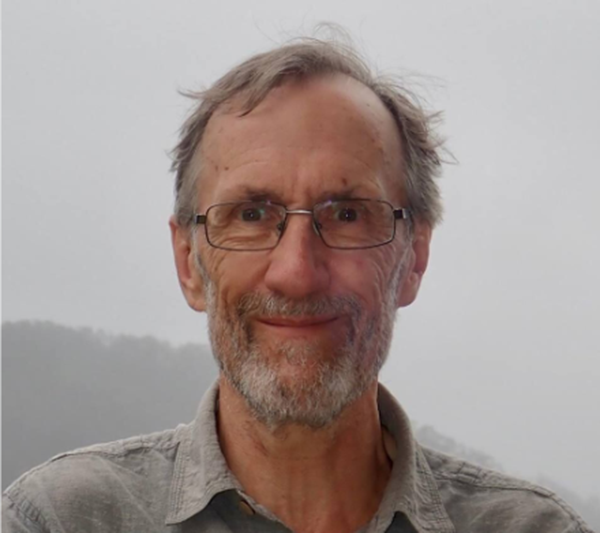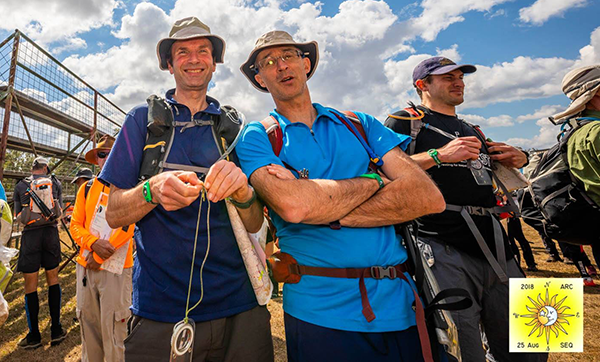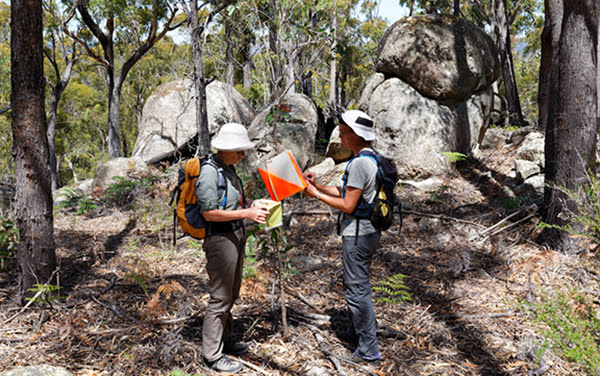The following article is reproduced from a recent NSW Rogaining article. Many thanks to Tristan White from NSW Rogaining for allowing us to use it.
…. To get a better feel about the event, I asked coordinator Peter Tuft some more questions to help entice to make the trip across Bass Strait:
Tristan White: Hi Peter, many people will have seen your name around in NSW events, but haven’t met you. So a few questions about you to start. Firstly, what did you do for a profession?
 Peter Tuft: I retired a couple of years ago after more than 20 years as an independent engineering consultant in the oil and gas industry, initially in design and more recently focusing on safety issues. Knowing what we know now I’m not thrilled about having worked in a fossil fuel industry, but one’s career path is not entirely under one’s own control and we didn’t really know about climate change all those years ago when I landed in that area by chance.
Peter Tuft: I retired a couple of years ago after more than 20 years as an independent engineering consultant in the oil and gas industry, initially in design and more recently focusing on safety issues. Knowing what we know now I’m not thrilled about having worked in a fossil fuel industry, but one’s career path is not entirely under one’s own control and we didn’t really know about climate change all those years ago when I landed in that area by chance.
TW: When did you do your first rogaine, what got you into it, and why do you keep coming back?
PT: I’ve been rogaining since before the name “rogaining” existed. I participated in what was then known as “Intervarsity Orienteering” in 1973 (at Yea in Victoria) and with that wealth of experience was part of the organising team for the 1974 Intervarsity. A few years later with many of the same people from UNSW we organised the first public rogaine in NSW at Wollombi. I’ve loved being in the bush since childhood, and I love the challenge of precise navigation, so rogaining is a perfect fit. I’m really not into flogging myself for 24 hours. However being involved in setting a course is even better because it’s less physically demanding and the navigation is even more demanding than for competitors.
TW: What is your most memorable rogaining experience?
PT: That first event in 1973 would have to be the most memorable because it was such a new experience to a wide-eyed 20 year old. The weather was pretty wet for the first few hours but we coped OK in our oiled japara jackets and Dunlop Volley sandshoes. At one point we paused in a tiny country pub to warm up and have a (non-alcoholic) drink. By the time we dropped in to the HH in the small hours I’d well and truly had enough and withdrew from the team, which back then was allowed without penalty. But I kept coming back anyway.
Also very memorable were multiple trips to Ross River Resort as part of the setting team for the World Champs in 2016. To be able to explore that fascinating country at great length and at relative leisure was wonderful.
TW: Now, about the event in November. Who is on the organisation team for the 2019 ARC?
PT: While I’m the Event Director I have only a coordination role. All the real work is being done by others, most particularly Bernard Walker as course setter (along with his partner Sara Brain). Gary Carroll (Rogaining Tas president) is heavily involved in a plethora of tasks (including keeping an eye on me), Sally Wayte is event secretary, Jeff Dunn is lead vetter, Kristin Raw is doing publicity, Nick Bowden (former RT president) is doing a sterling job on logistics, and there are many others chipping in in various ways. All of these people have many years if not decades of rogaining and orienteering experience. Bernard in particular has enormous experience having competed in about 50 rogaines, set and/or organised five and has also been event director for a number of national orienteering events.

Bernard & Gary at the start of the 2018 ARC in S-E Qld
TW: Why did you choose the Bay of Fires region for the event?
PT: Bernard investigated several potential locations that were eliminated due to landowner or other issues. The St Helens area is well-known to orienteers as offering great terrain, and in addition is mostly on Parks or forestry land.

TW: You’re obviously going to keep intimate details about the event a well-guarded secret, but is there anything you can tell us about the course area and what’s special about it?
PT: Granite terrain with interesting rock features, runnable forest, interesting navigation, spectacular coastline. I particularly enjoyed setting a checkpoint at a granite boulder about 8m high as well as travelling through very open forest with minimal understorey. Unfortunately it isn’t all quite like that, and you might even find the occasional small patch of scrub, but there is certainly a great deal of beautiful terrain.

Bernard and Sara doing field work on course
TW: What makes the Tasmanian rogaining experience unique?
PT: You are less likely to get overheated! (but we can’t promise that you won’t). Perhaps the most unique feature of this event is the Bay of Fires granite coastline. Apart from that most of the event area is not dissimilar to much mainland country. That’s a good thing, because you really would not want to be rogaining in the central and western parts of Tasmania which are well-known and spectacular but best appreciated from a good track.
TW: What if I’m not an experienced rogainer? Should the “Australasian Champs” name turn me off?
PT: We have deliberately set the course to be suitable for all standards. There is a good selection of checkpoints in relatively easy terrain and not too far from the hash house. Even the Bay of Fires coast is within reasonable striking distance. So less experienced rogainers and family groups are most welcome.

TW: What else would you recommend interstate teams check out in the vicinity so we can make a holiday out of it?
PT: All of Tasmania! It’s not a huge place. Since you will be on the East Coast the obvious destinations include the Freycinet Peninusula (only 1.5h drive), Maria Island (2.5h + ferry), and the Tasman Peninsular and Port Arthur (4h; try the fantastic day walk to Cape Raoul). It’s a couple of hours drive to Launceston, Hobart is only a bit over 3h and Cradle Mountain is less than 4h. And if you are into mountain biking then stay fairly local and pop over the range to Derby with its world-class trails. I could go on and on…
TW: Thanks Peter! See you in November.
